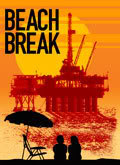 With the exception of the friendly folks at Sound Energy Solutions (SES), a subsidiary of Mitsubishi and ConocoPhillips, just about nobody in Long Beach—Mayor Bob Foster and most residents who already think there's enough industrial pollution at the port—want to see a Liquefied Natural Gas (LNG) terminal come to town.
With the exception of the friendly folks at Sound Energy Solutions (SES), a subsidiary of Mitsubishi and ConocoPhillips, just about nobody in Long Beach—Mayor Bob Foster and most residents who already think there's enough industrial pollution at the port—want to see a Liquefied Natural Gas (LNG) terminal come to town.
But like a psycho killer in a bad Hollywood film who refuses to die even after being stabbed through the heart, the project simply won't go away.
It died what most observers thought was a natural death back in January, when city officials and Port of Long Beach's Board of Harbor Commissioners voted not to complete a costly Environmental Impact Report (EIR) because the preliminary report, in the words of City Attorney Robert Shannon, “fail[ed] to provide necessary information to the public, most critically in the area of public safety and security, as legally required.”
]
By “public safety and security” Shannon may have been referring to widespread reports that placing an LNG terminal in Long Beach could make the port a target for terrorists, given that an explosion at the gas processing facility could easily incinerate anybody within a one-mile radius. So, when the Port of Long Beach's Board of Harbor Commissioners put a stop to the EIR, residents cheered and environmental activists declared victory. But SES hasn't given up. In February they sued the city, demanding they complete the EIR process. The case is scheduled to receive a verdict in October and if SES wins, the company would have to pony up $1 million to complete the report.
According to the Sierra Club, LNG is a form of natural, clean burning gas that has been refrigerated into a cryogenic liquid 260 degrees Fahrenheit below zero. One gallon of LNG expands back to its orinional size, 600 times its liquified state, when it is converted back to a gas. If it makes contact with water, LNG can expand to its original size with explosive force. To top it off, the substance is extremely flammable and is not easily extinguished due to its high burn temperature.
Because the ports of Los Angeles and Long Beach combine to make the busiest port in the nation—it's also considered a major terrorist target without a highly explosive facility on the premises—any possible port destruction could impact the entire nation. All of which tends to argue in favor of putting an LNG plant just about anywhere else on the planet that's not the Port of Long Beach.
But SES isn't just relying on the courts to make their case. In recent weeks, the company has aired local advertisements for the project on cable TV urging city residents to contact the city and voice their support for a completion of the EIR. In the ads, a nice looking man named Dave San Jose, a local bike charity organizer, stands in front of a fire truck and tells viewers to give the LNG terminal EIR a shot. “It deserves a fair chance,” he says.
So, how are those ads working?
According to Sean Peterson, a spokesman for Mayor Foster, not so great. Peterson says just about all the few responses the city has received in favor of the EIR's completion were from individuals or groups who participated in funding or making the ads, like SES officials and Dave San Jose, the guy in the ad himself—who obviously took his own plea to heart and wrote the city right away.
“We have received hundreds of letters and emails opposing the project,” Peterson said, “and I'd say, less than 25 in favor of it.”


One Reply to “Explosive Gas”